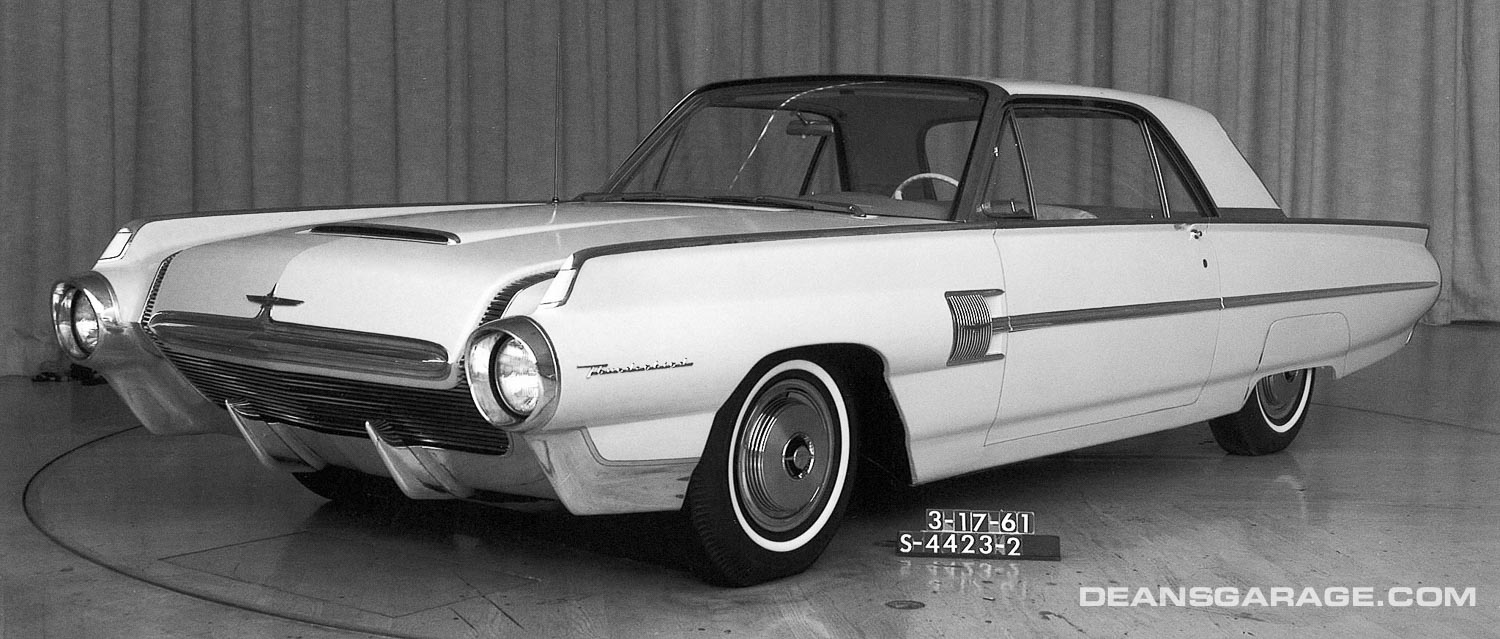
A Flair for the All-new ’64 Thunderbird, Part One
By Todd Duhnke
This story was published in the January-February issue of The Thunderbird Scoop magazine. Condensed and re-printed by permission.
Photos: Ford Design. Posted by permission.
Jim Farrell did an excellent job outlining the history of the ’61 Thunderbird’s development in an earlier Dean’s Garage post as he knew many of the staff designers involved. The story is not so clear on the ’64 through ’66 “Flair Birds.” We do not have contact with designers who were in the studio some 60 years ago. The story will be told through photos in chronological order.
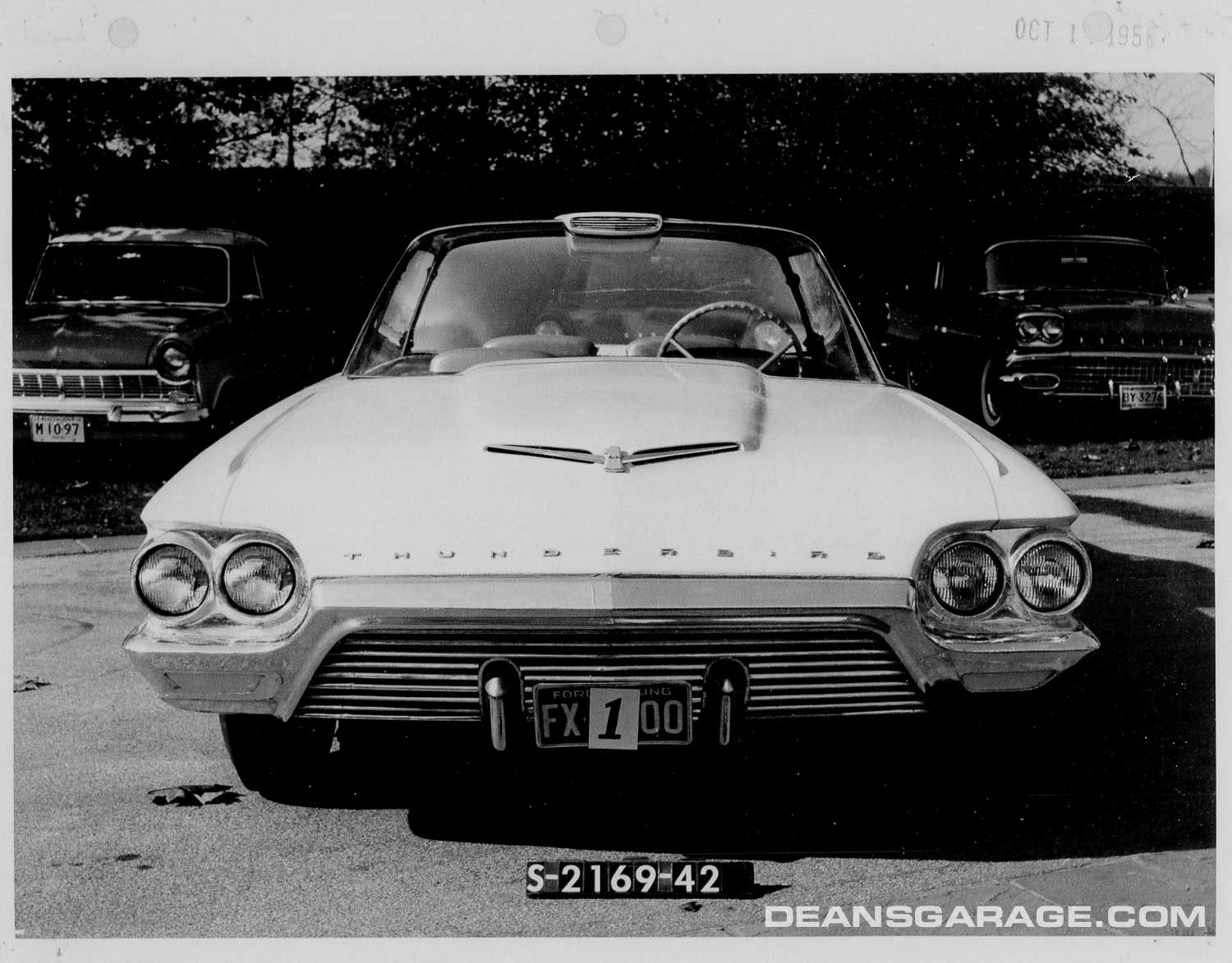
10/14/58. This front-end design proposal is close to the production ’64 Thunderbird. Many styling elements in this first photo were retained, and appeared on the ’64 Thunderbird. The long, domed hood; the way the headlight pockets are cut into the hood and fender; the bumper design; the Thunderbird lettering; and the design line above the wheel arches. There is a ’58 Pontiac in the background. All of Detroit’s Big Three bought competitive cars from dealers. Many were completely dissembled for a thorough evaluation.
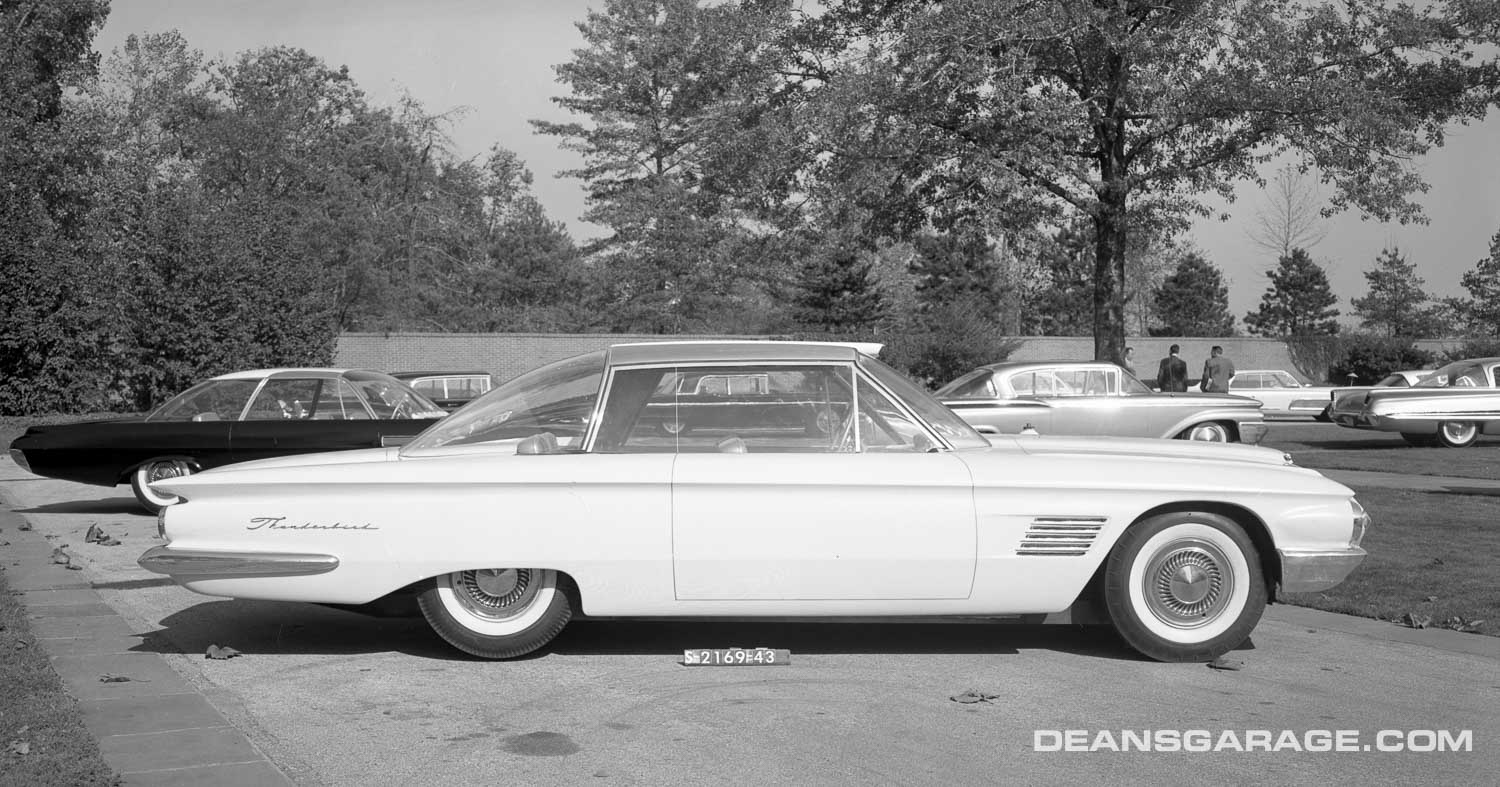
In the background is the ’60 Mercury close to production. The black model may have also been a Thunderbird concept. Huge greenhouses with lots of glass and thin “A” and “C” pillars became popular in the late fifties and early sixties with all the manufacturers. Show and production vehicles alike as evidenced by the Mercury XM Turnpike Cruiser, ’59 Mercury, ’60 Galaxie Starliner, and GM’s popular “Bubbletops.”
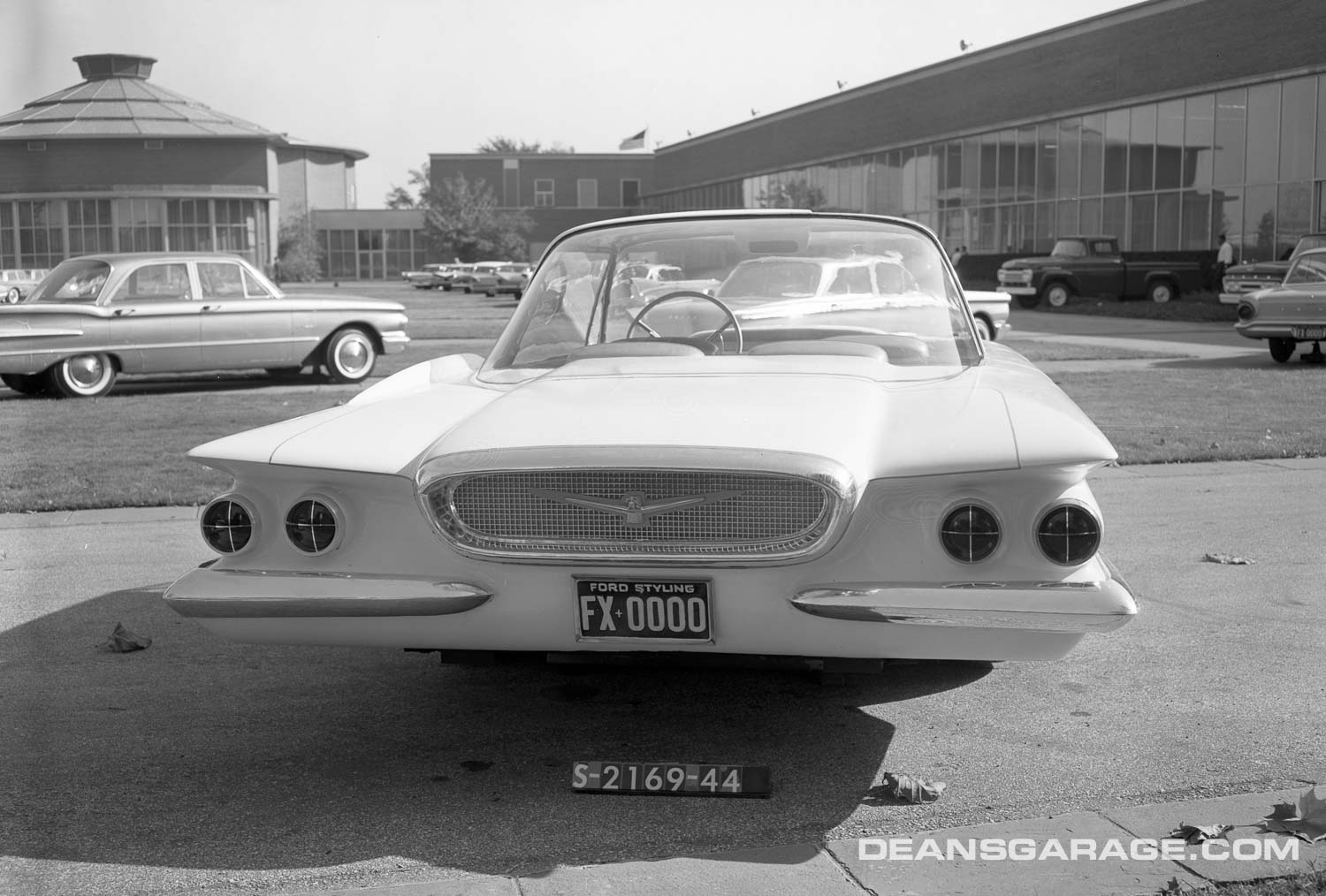
This photo was taken in the Styling Patio of the Styling Center, later renamed the Product Development Center. Comet and Falcon models are in the background, close to production ready. What’s in the background can be just as interesting as the car being photographed.
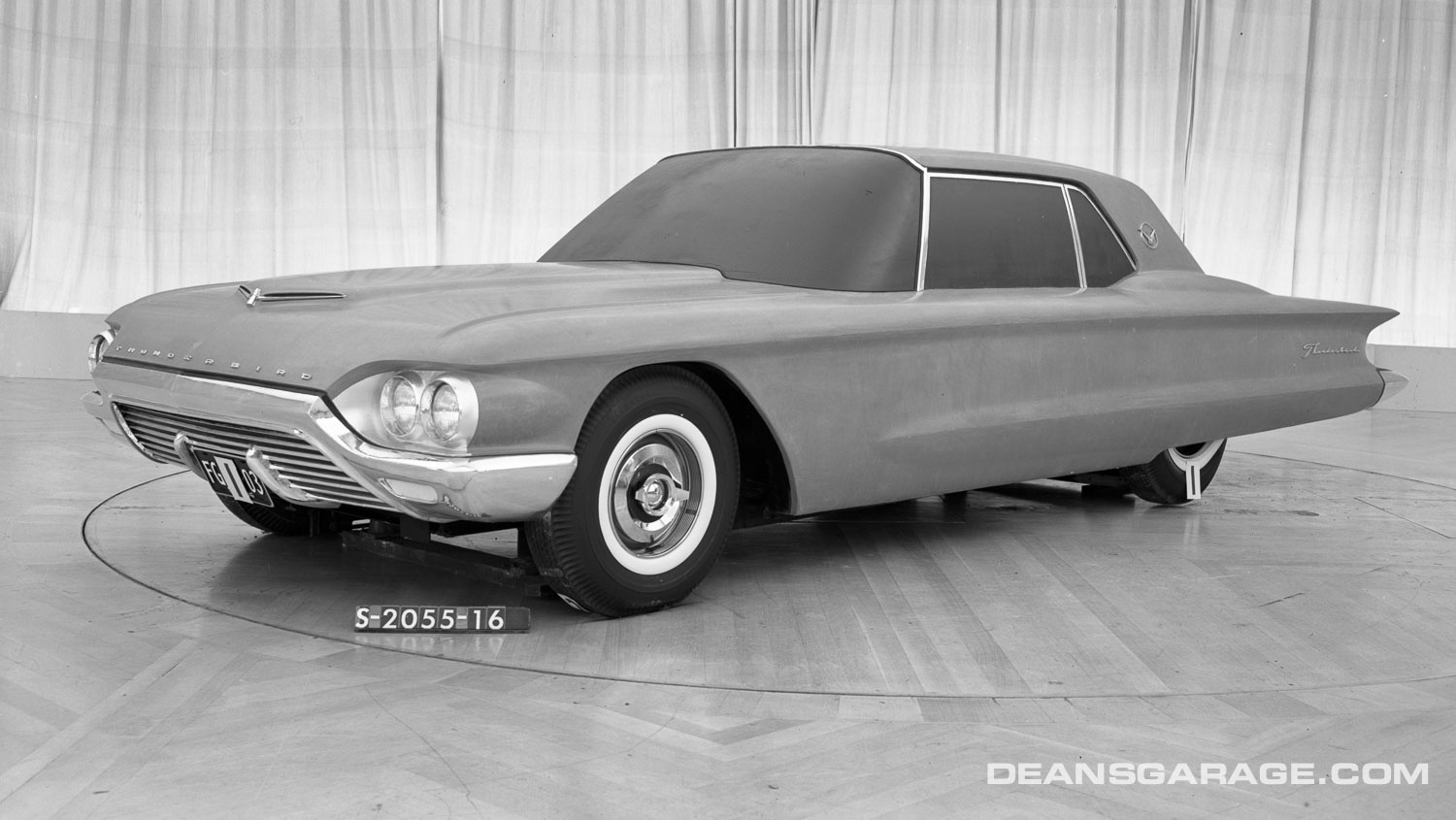
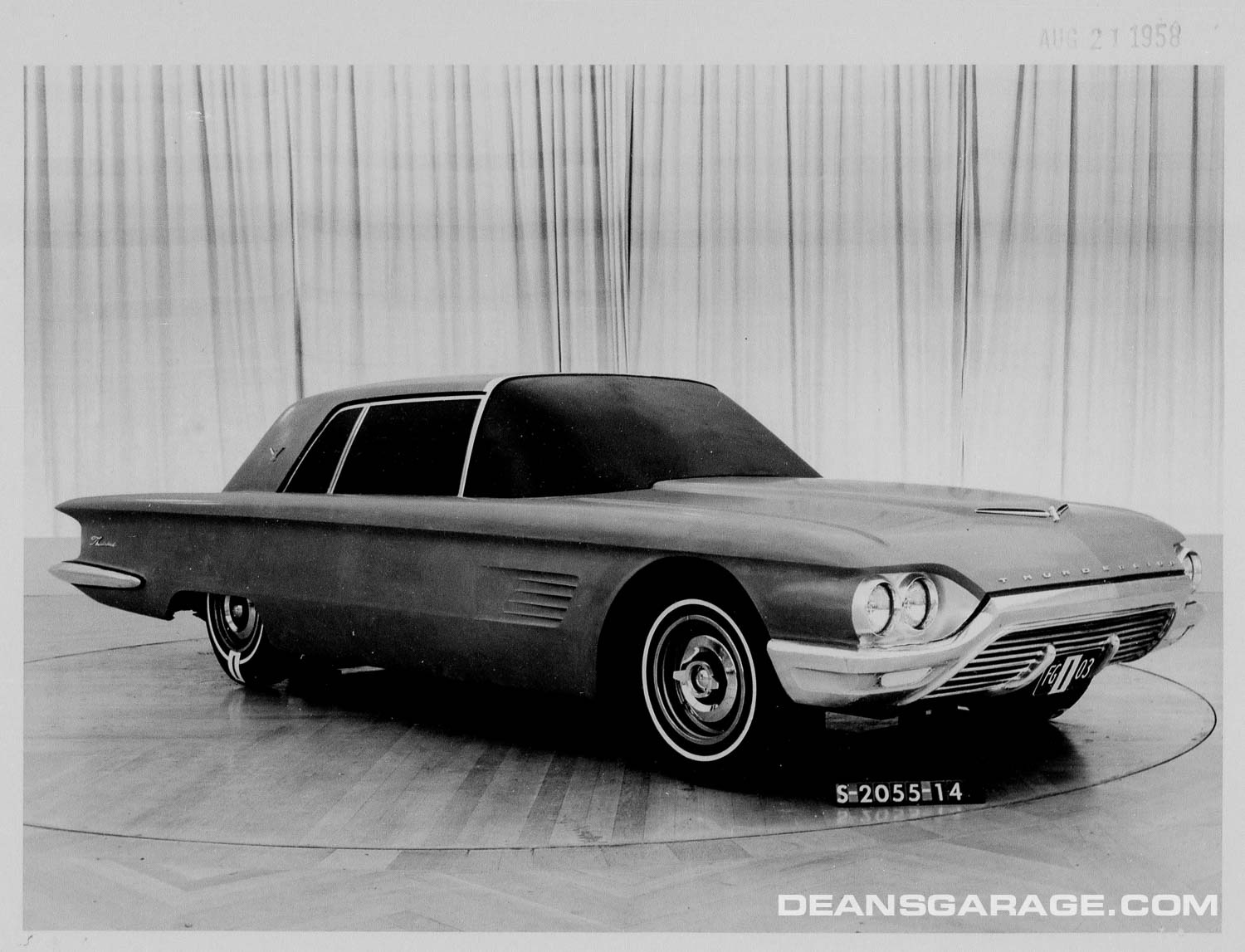
These two photos are of the same clay model, taken sometime in the ’58–’59 timeframe. There is a different design on each body side. Also, the right side has narrow white stripe tires that was introduced in the 1962 model year. It is probable that this clay predates the earlier pictures of the white fiberglass model as the Styling Studio negative numbers are lower. An interesting design element is the chrome Thunderbird winged emblem located on the hood scoop opening. Its wings serve as wind splits. That would have looked cool had it made production.

3/17/61. A facelifted ‘63 was being considered as an alternative to an all new design for 1964, but the new design was produced. The new car did carry over the chassis from the ‘63, however. In 1959 rear coil springs were were replaced with leaf springs. (There were complaints that the ’58 was too bouncy. Conventional leaf springs were the answer.) Other than that, there is little difference in the platforms from 1958 through 1966.
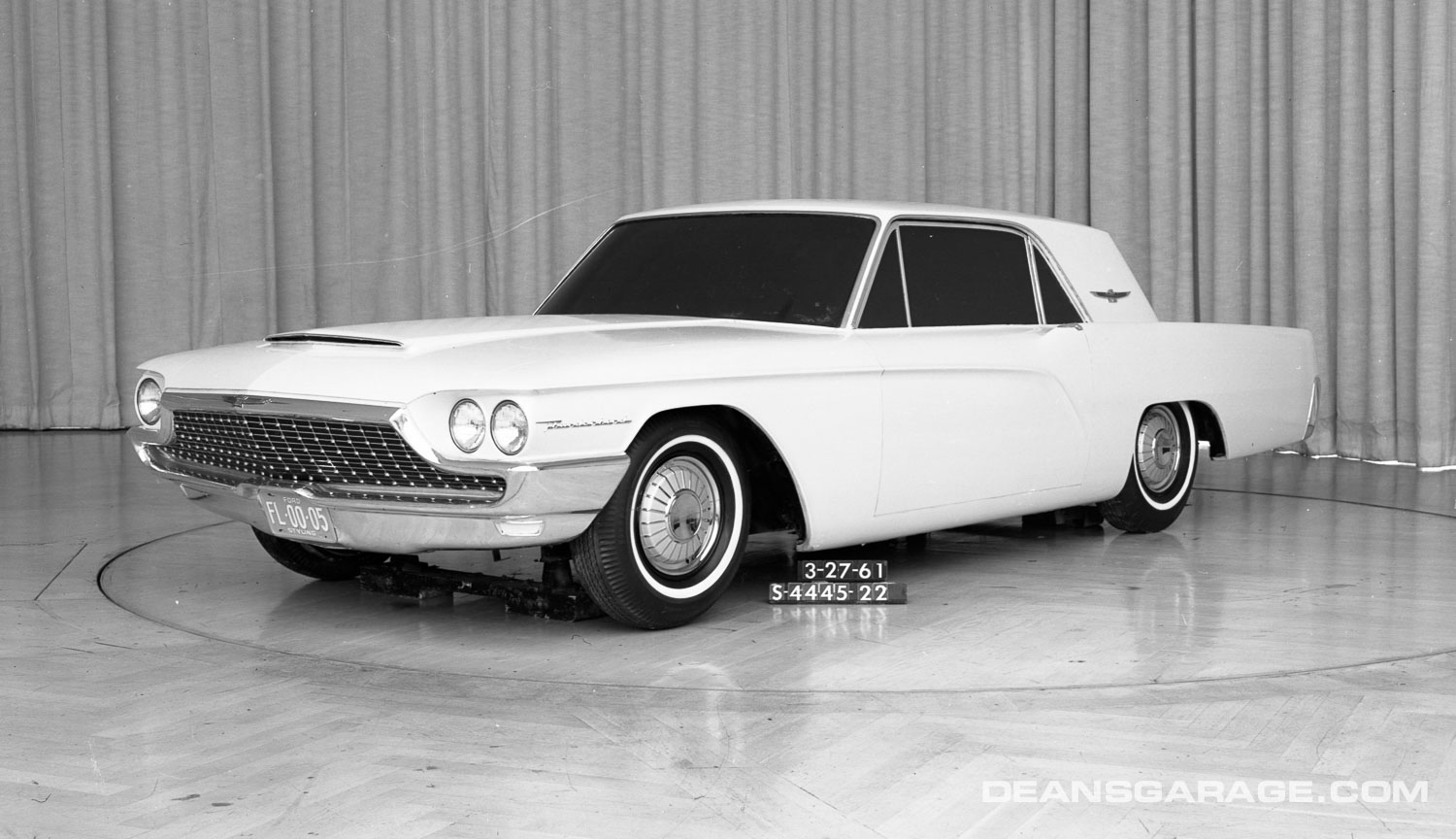
3/27/61. Alan Tast, in his excellent book, Thunderbird 1955–66, states that Ford considered four options:
• An all-new car with front wheel drive.
• An all-new car with conventional drive, though slightly smaller than a ‘60.
• A new exterior design on the carryover ’58–’63 platform.
• A conventional drive new car that shared more interchangeability with the Continental.
Maybe there was a fifth option—a facelifted ’63 for 1964. By this time the next Thunderbird’s development had to be well down the road, as well as the refreshed ’63s with their different fender and door stampings. I suspect that they were looking at this as perhaps a cost savings at the same time they were developing the other models, which eventually did become the ’64 Thunderbird. They may also have considered taking the cost savings approach due to other priorities such as the upcoming Mustang and all-new from the ground up ’65 full sized Fords and Mercurys—huge and crucial programs.
By this time the Thunderbird was well into a three-year design cycle program: ’55 through ’57; ’58 through ’60, and ’61 through ‘63.
Because the date of the photo of the white model (which looks like a production ‘61 with a restyled front clip) is close to the preceding clay, Ford must have been still considering facelifting the existing car. In the end, the production 1964 Thunderbird had fresh styling, but used the existing chassis.
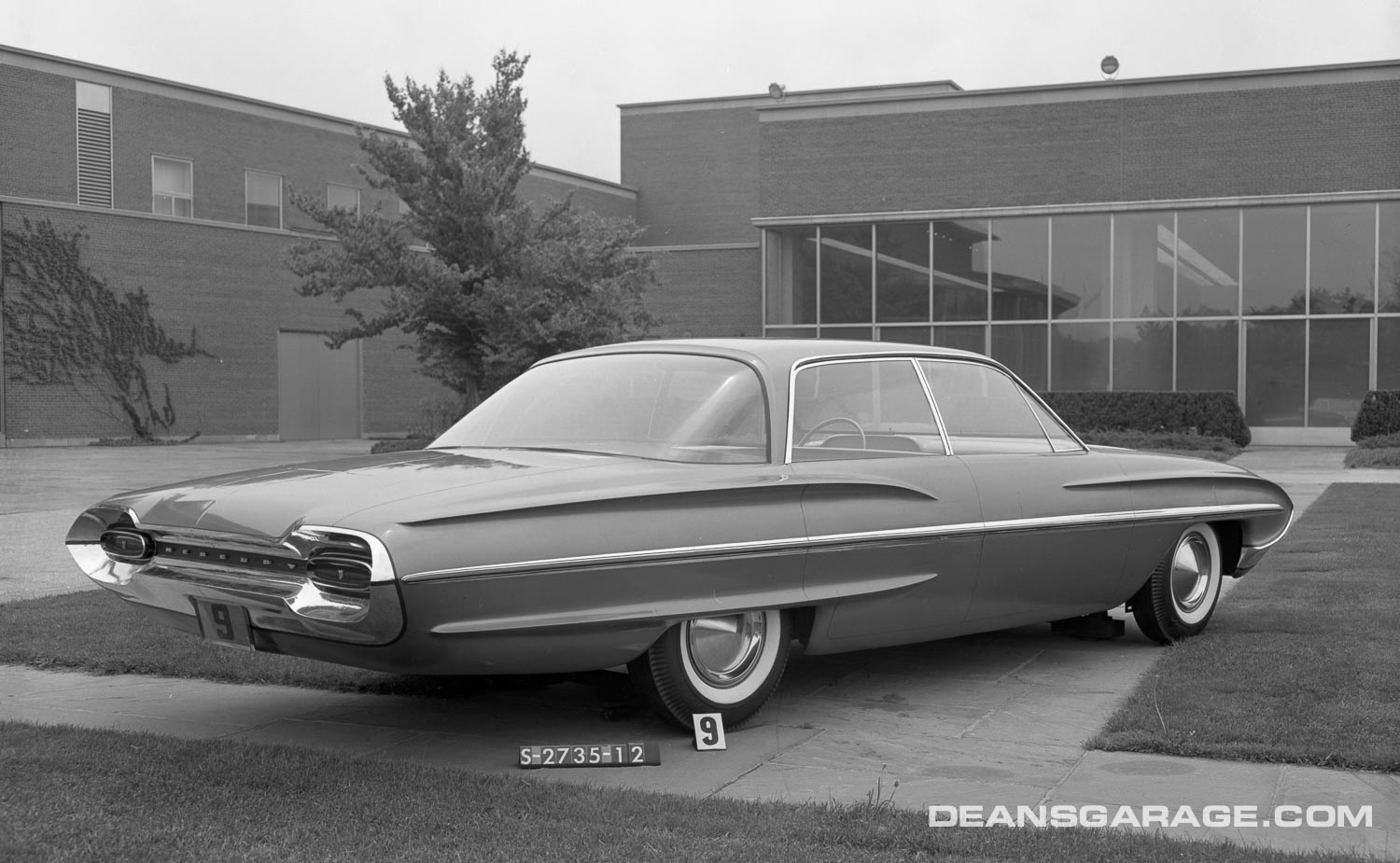
This four-door Mercury fiberglass model from 1959 quite likely came out of Buzz Grisinger’s Lincoln-Mercury Studio. The body side theme may have influenced the styling of the ‘64 Thunderbird.
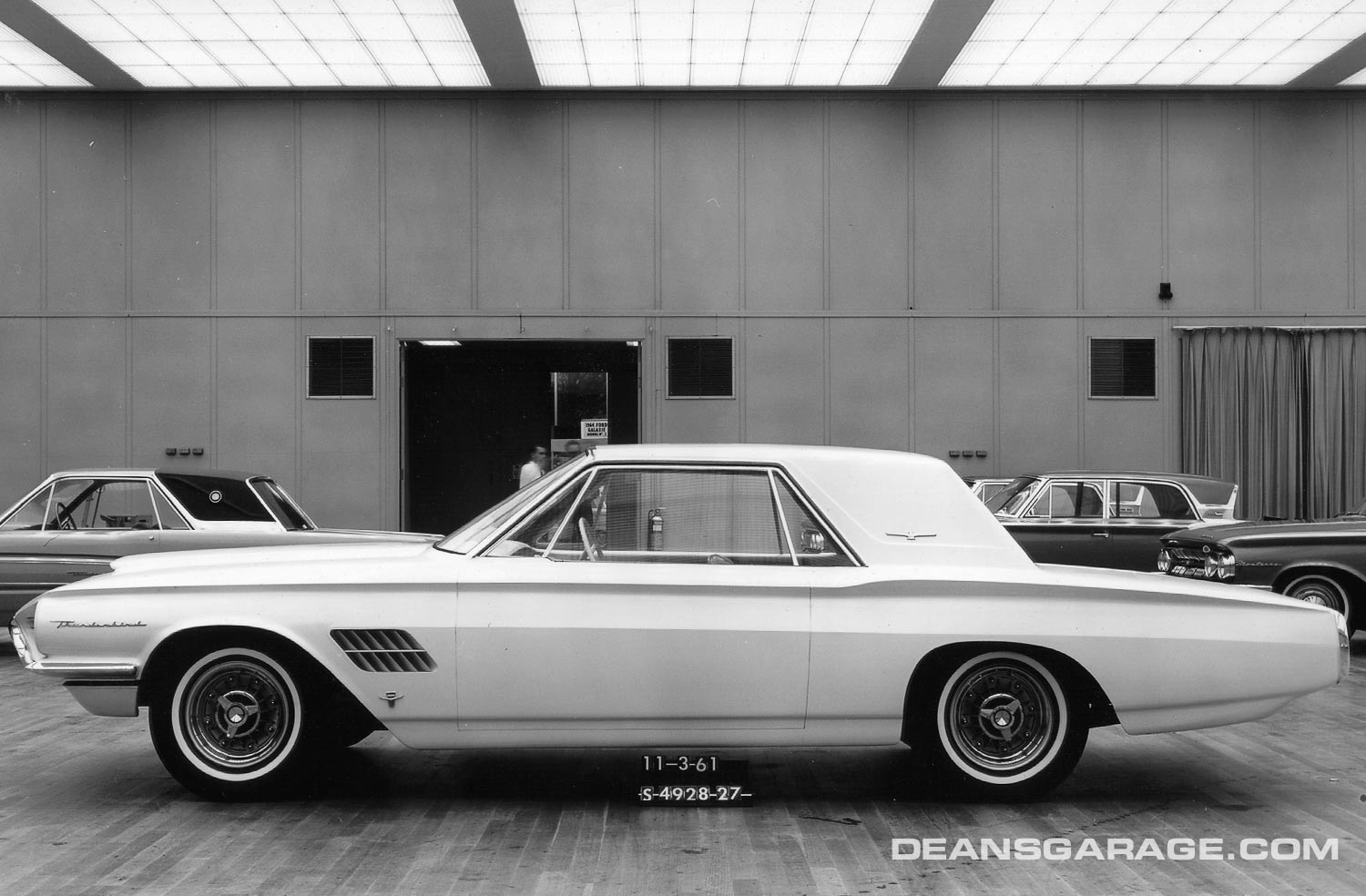
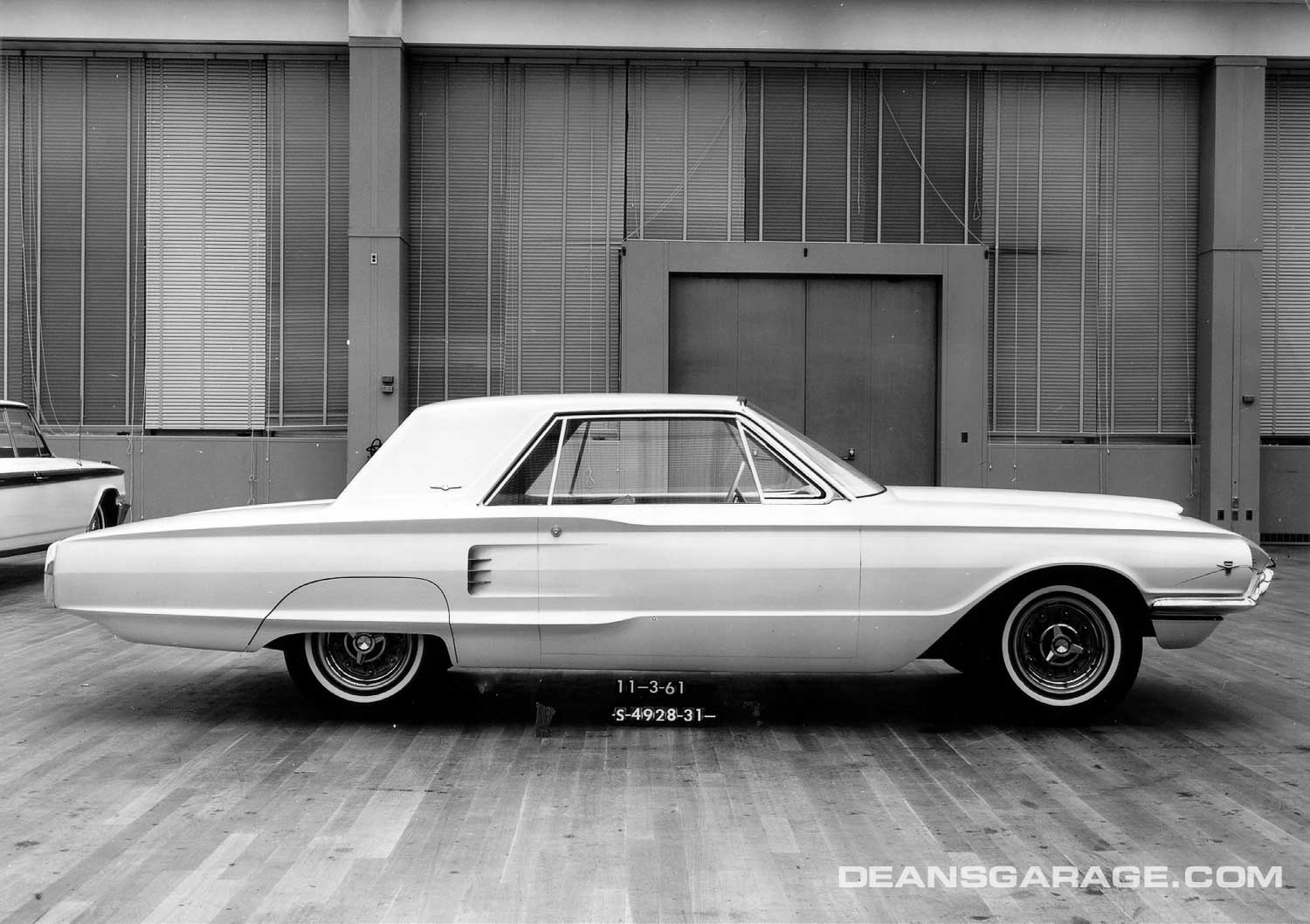
11/3/31. The new theme for 1964 has been selected, and the facelifted ‘63 was no longer being considered.
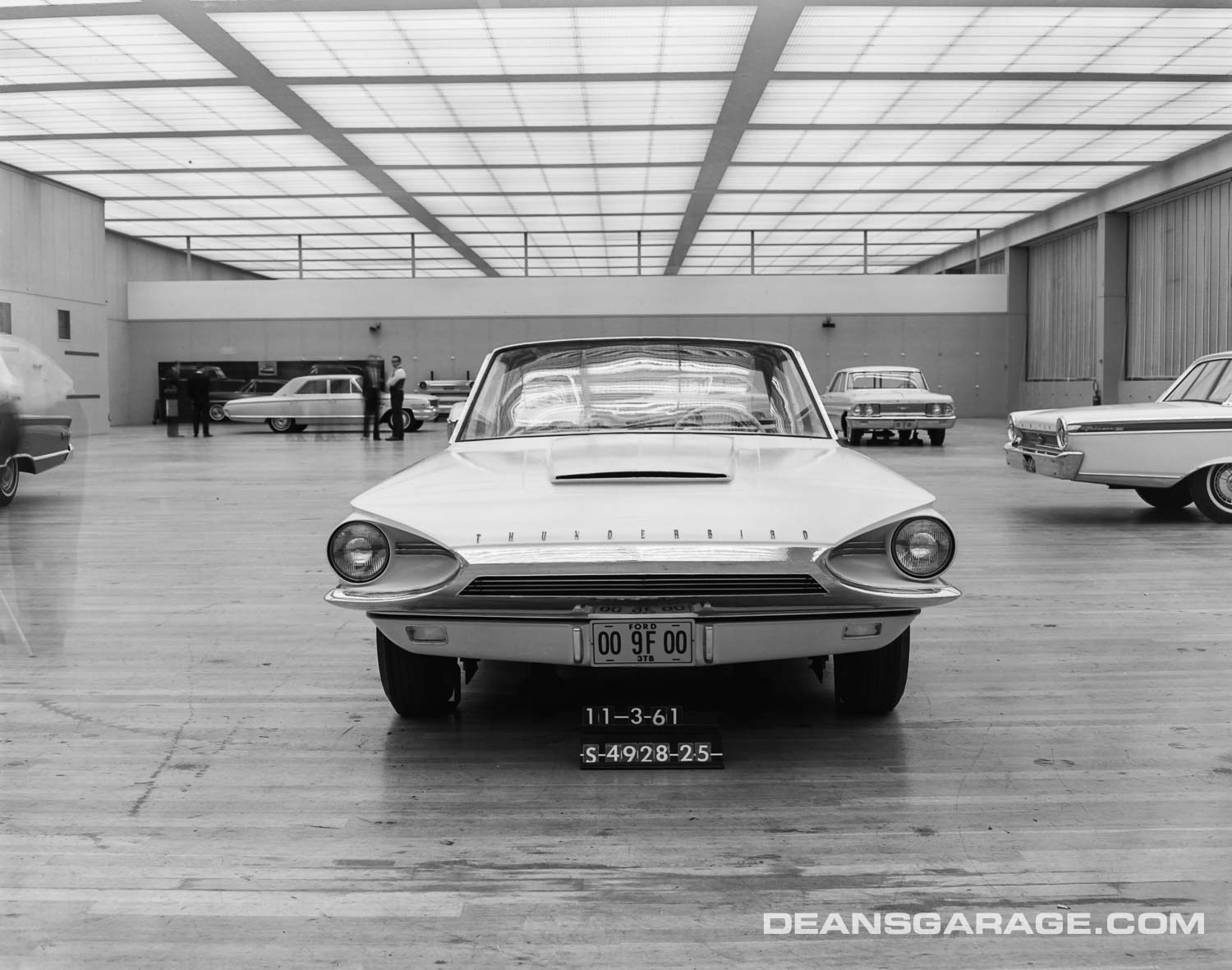
The design of the front is still in flux. Single headlights were out of character for an up-market car. Ford Design had adopted an in-house design rule for front bumper designs—no valences. However, that rule was being challenged here. The 1964 Mustang and the 1966 Thunderbird both ended up with blade front bumpers with valences
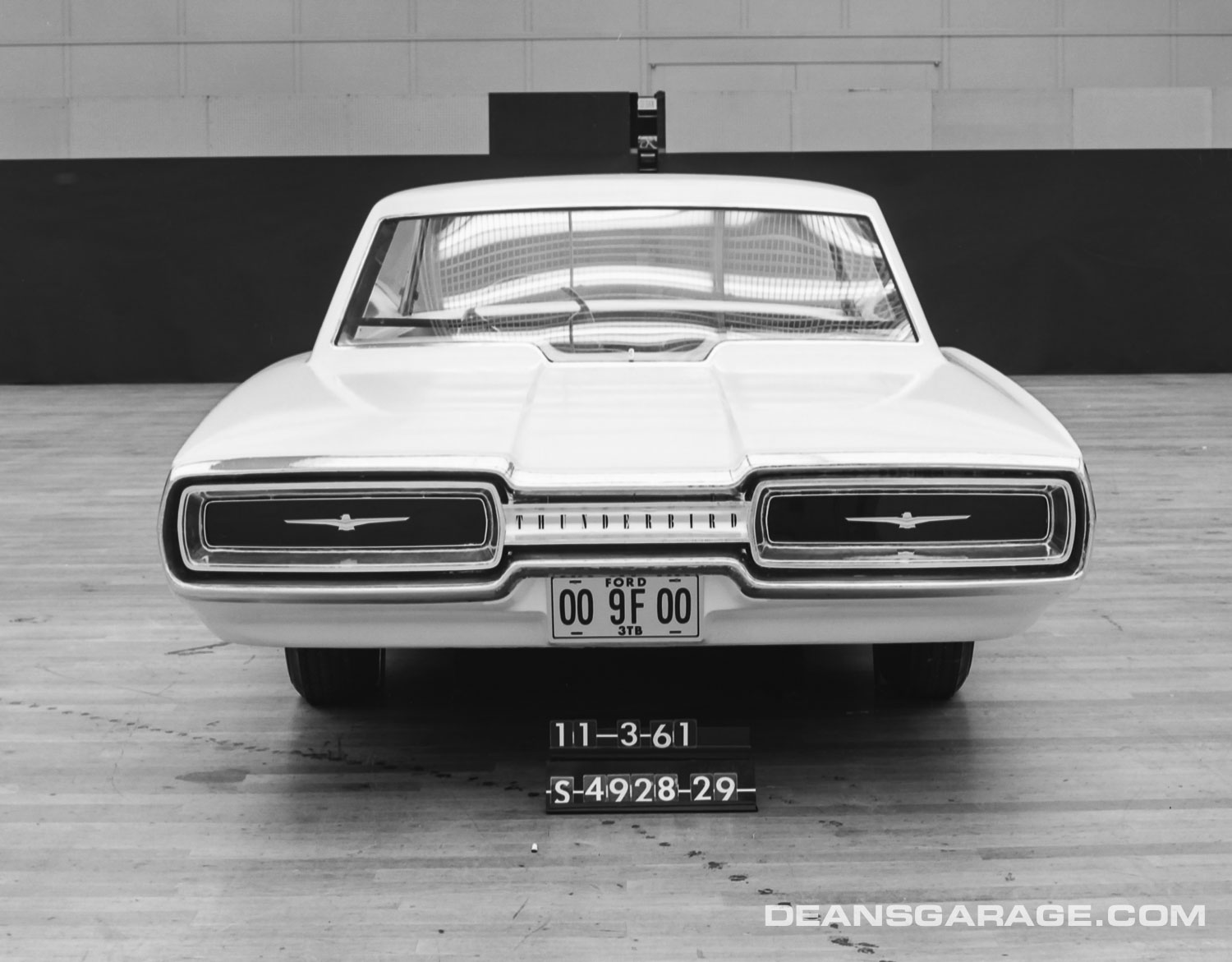
The rear is quite close to production. Note center vent below the backlight. One of the engineering goals for the ‘64 was flow-through air ventilation. This became full width and went into production.
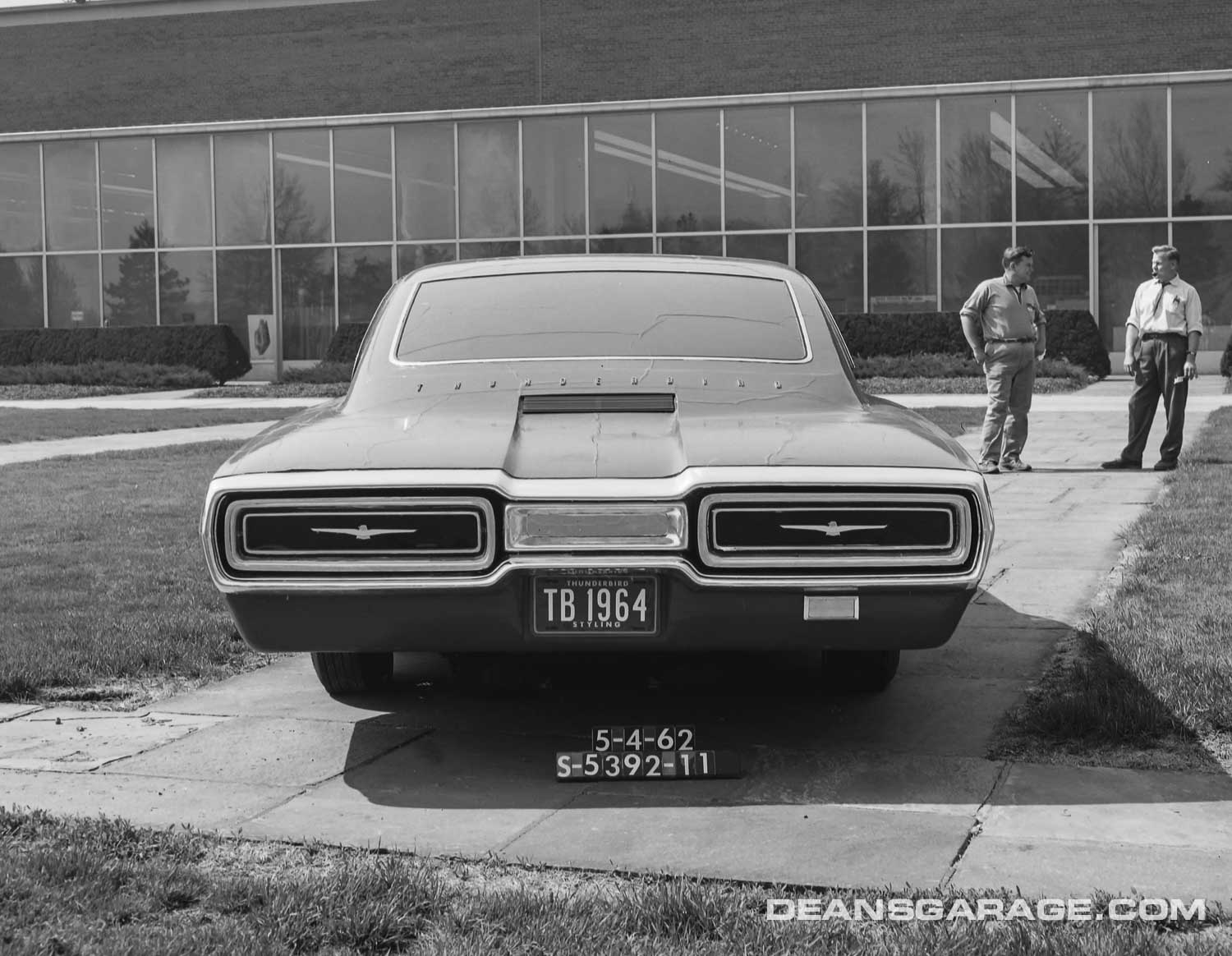
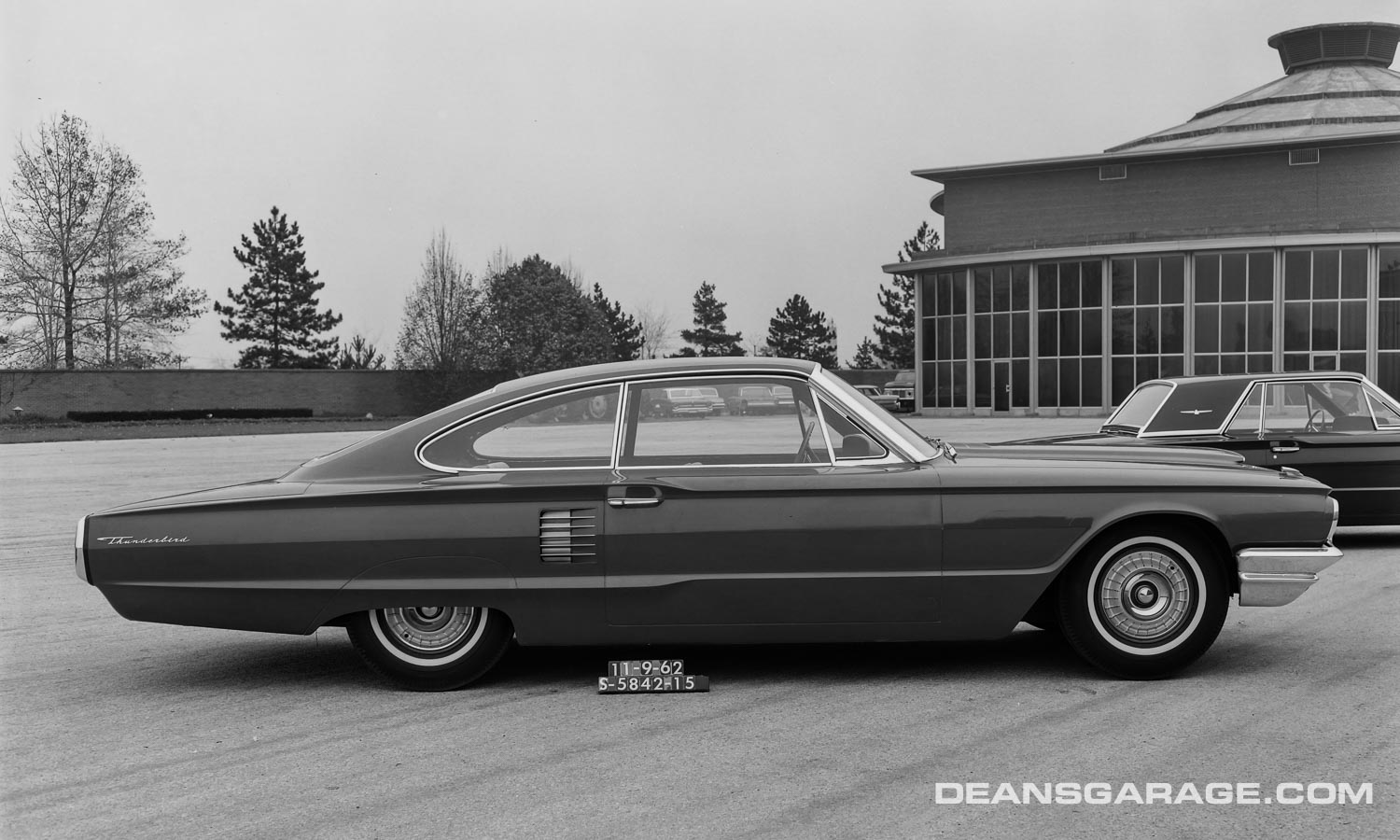
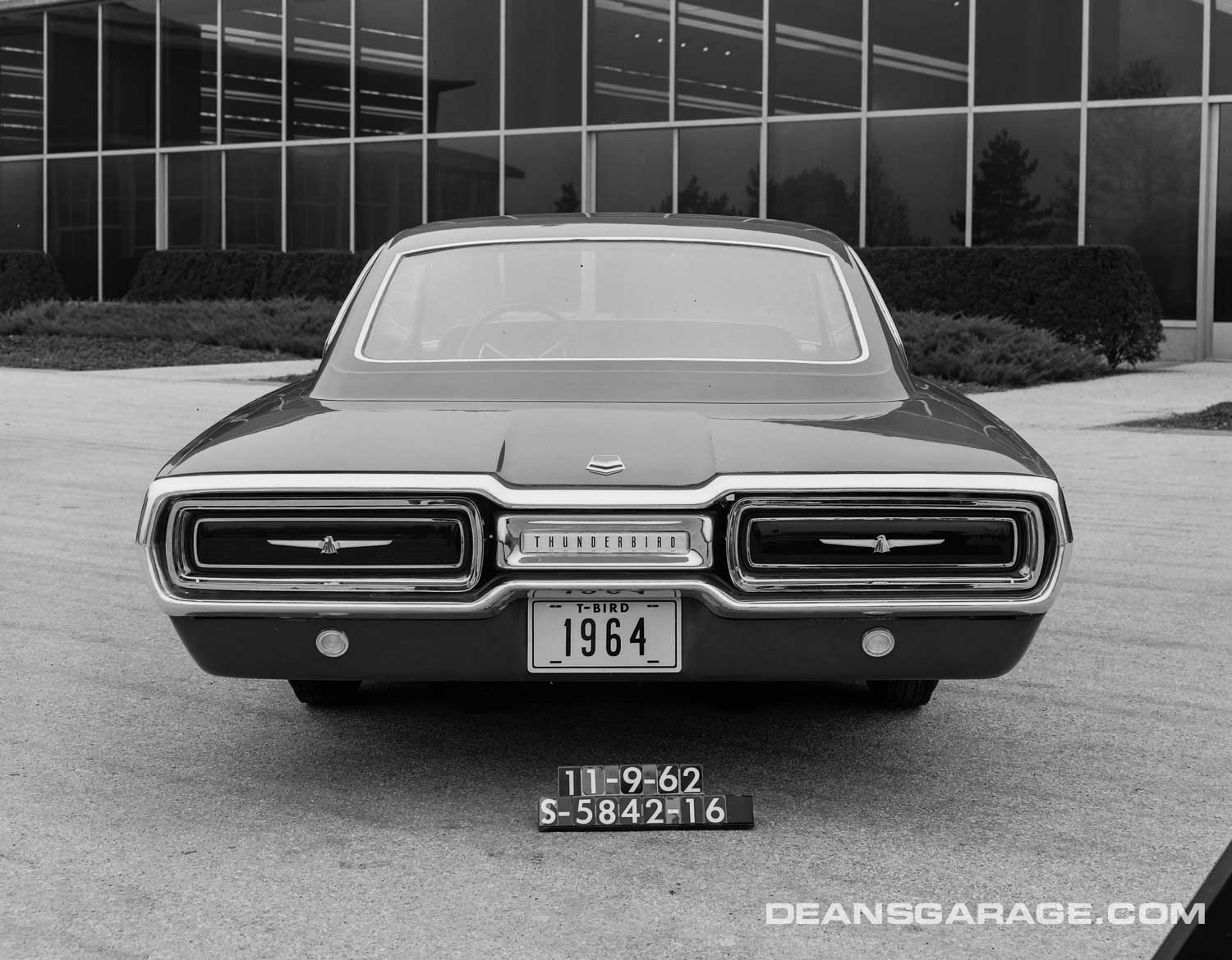
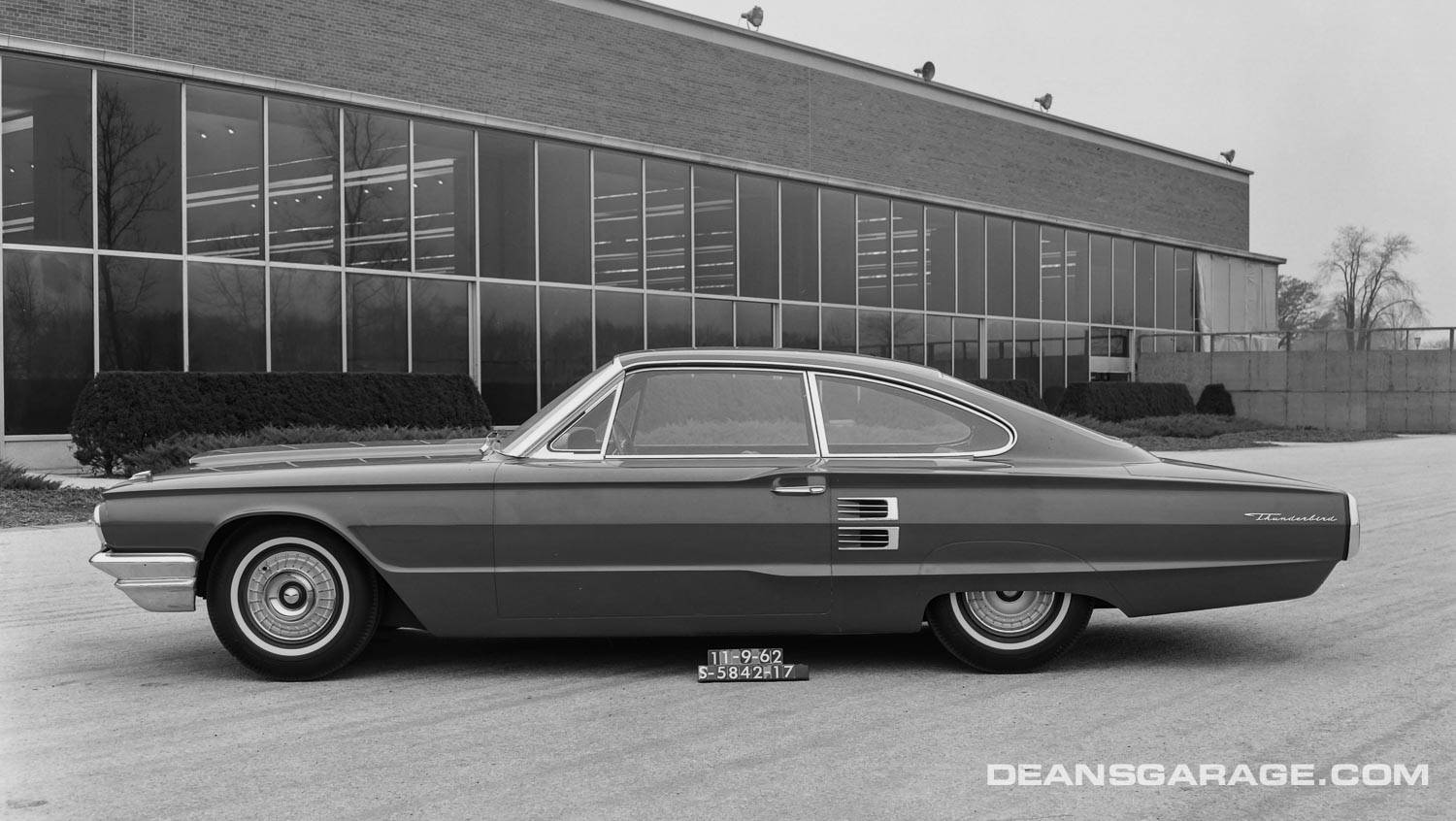
Ford modified a ’62 Thunderbird and made it into a fastback show car called Italien. During the same timeframe, Ford Design proposed a fastback Thunderbird, possibly because of the favorable public reaction to the Italien.
Fastback designs for the 1963-1/2 Galaxie Sports Hardtop and the Falcon Futura Sprint were already going into production. Ford Design proposed a Thunderbird fastback, possibly for a later release as an addition to the Thunderbird’s formal roofline.
Ford Design proposed door handles integrated into the trim at the belt line or the top character line. The production ‘64 Thunderbird ended up with a more conventional, but attractive design.
In the background is a fiberglass model which looks close to production. By this time there is only about eight months before production started in August of 1963, and less than a year before the September 27 product introduction.
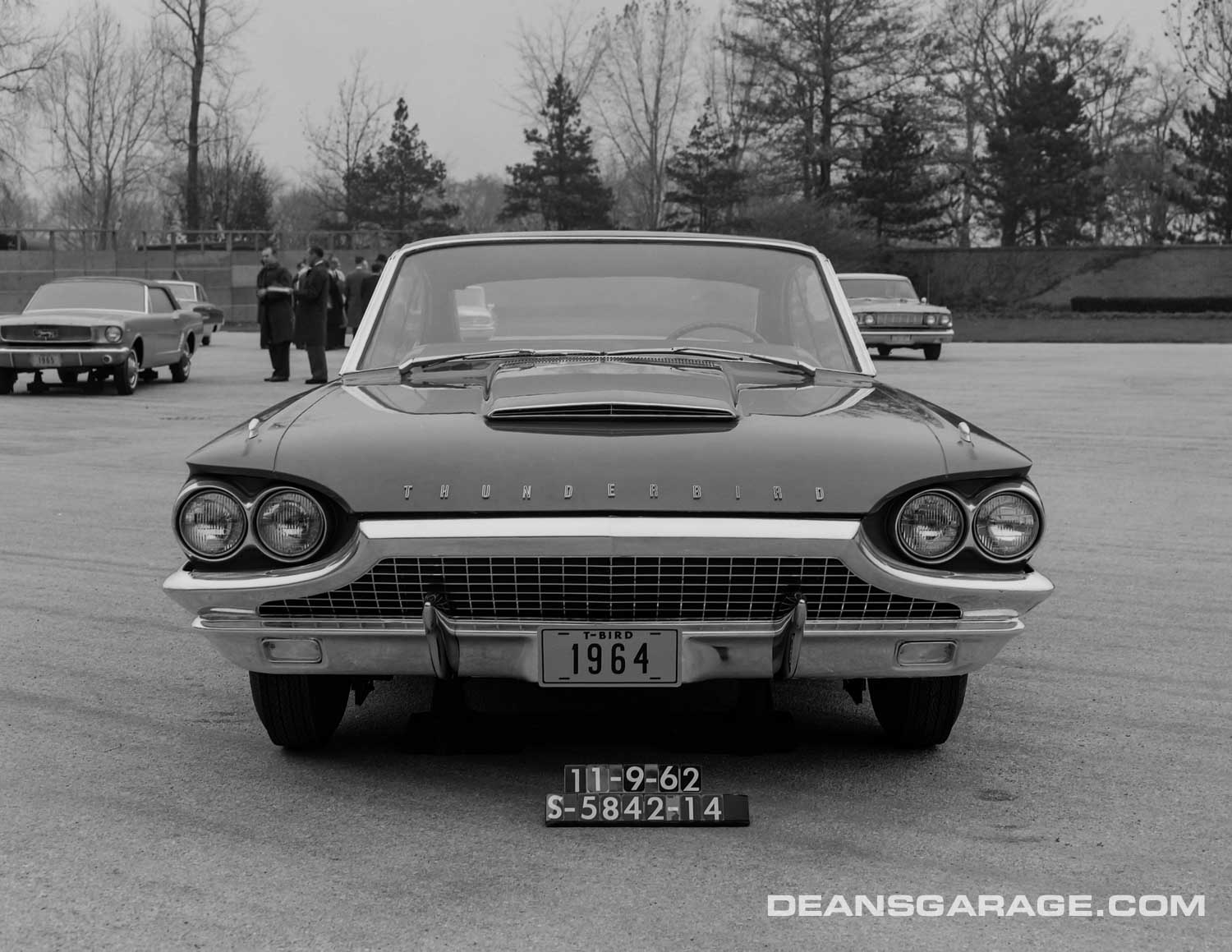
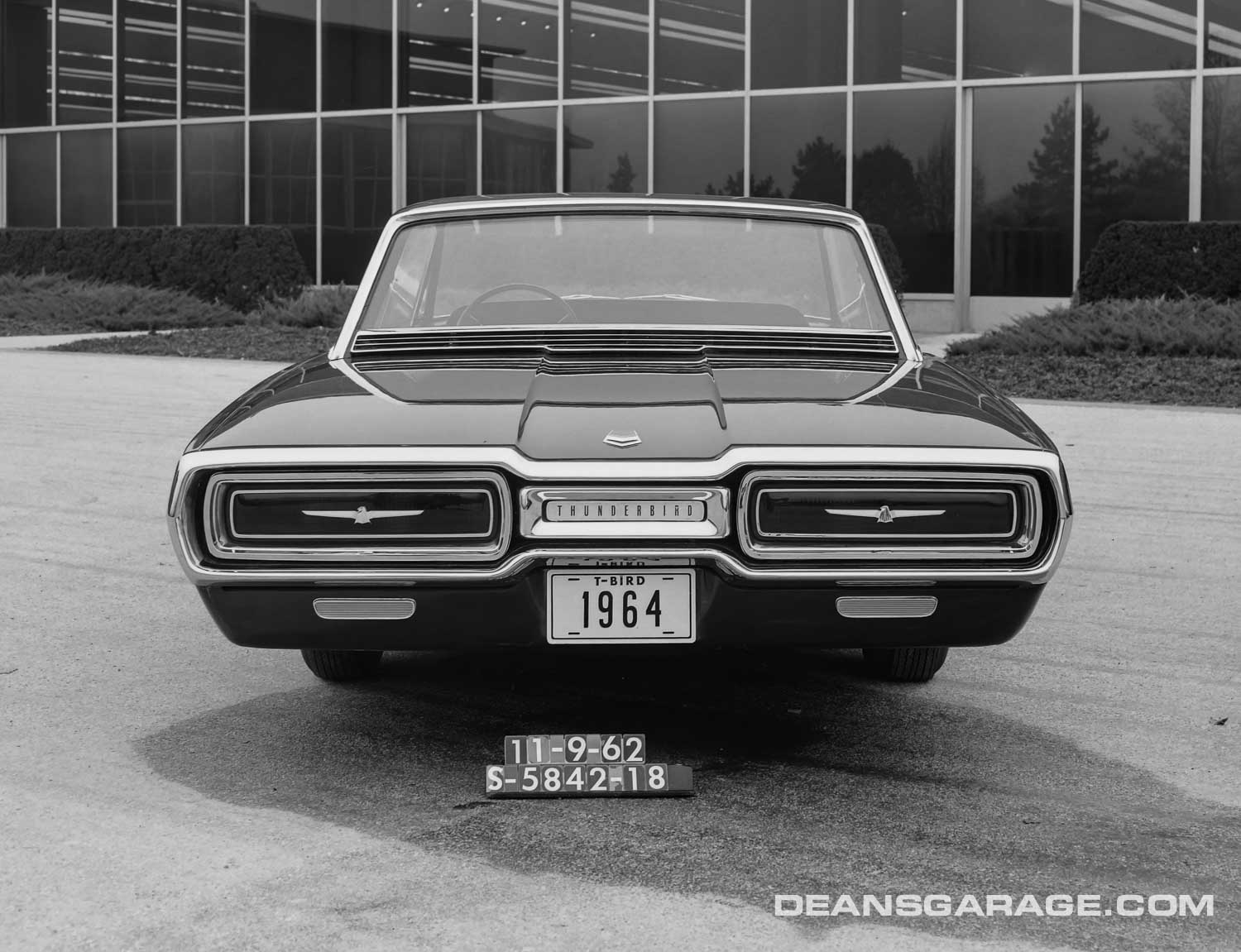
The front with quad headlights, rear design with a full-width vent, and the formal roofline are headed for production.

If you’ve never experienced the pleasure of the bucket seats that came in ’64 Galaxie XLs or ’64-’66 Thunderbirds, you haven’t experienced the most perfect bucket seat design ever created! Nothing before or since has ever come close to the sheer fun and comfort of these incredible cars.
The top photo should have been produced instead of the final decision! What a pretty car. With everybody spying on each other back then, it isn’t hard to see where Chrysler got the headlights for their Thunderbird-inspired Turbine Car.
Along with the stray 1958 Pontiac there’s a 1960 Ford Taunus.
The 1960 Starliner is a stand-alone model, and not a part of the Galaxie line; same with the Falcon Sprint and Futura; they are separate models, not upgrades of one another.
That FX 0000 comes dangerously close to looking like a dreadful 1962 Plymouth. Best keep it covered!
If you study these photos closely, you can see all kinds of details. In the picture of the car with the 00-9F-00 plate, you can see where Ford couldn’t spell ‘THUNDERBIRD’, having lost some letters.
Back in the 1970s, 1961-1963 Thunderbird guru Rick Holloway bought a triple black ’62 Sports Roadster from me and performed a complete restoration. Then he discovered the ’63 Italiene Show Car, which had recently been tracked down in Oxnard, California, as someone’s daily beater and rescued. He wondered how he could build one from a production ’63 hardtop, so I recommended he use the roof from a ’67/’68 Rambler Ambassador, which is visually identical to the Italiene Show Car. He located one in a local wrecking yard, bought a good ’63 hardtop and went to work. We moved out of the area shortly after and lost contact. But knowing Rick’s dedication to accuracy, his Italiene has to be as faithful to the original as the original itself.
You have a sharp eye, Jason! While the ’60 Starliner does not have Galaxie nameplates it does have the same trim and interior features as a Galaxie. And in the deluxe ’60 catalog both the Starliner and Sunliner are featured in the middle of the Galaxie section. One can see where this gets confusing with some saying that they were a stand alone model and others that the Starliner and Sunliner were members of a Galaxie Special Series.
In ’61 they replaced the Starliner nameplate on the trunk with Galaxie. The Starliner nameplates were kept on both the front fenders. We have a 23,000 mile all original ’61 Garden Turquoise Galaxie Starliner with factory 3×2 Tri-Power. By ’61 there was no mistaking that the Starliner was part of the Galaxie family.
I like the first photo front end style. (S-4423-2). The (S-2735-12) rear treatment and the (S-4928-27) top.
Nice article! But for me the Thunderbird’s show is stolen by that gorgeous Mercury concept (S-2735-12). Do you have any more images of it?